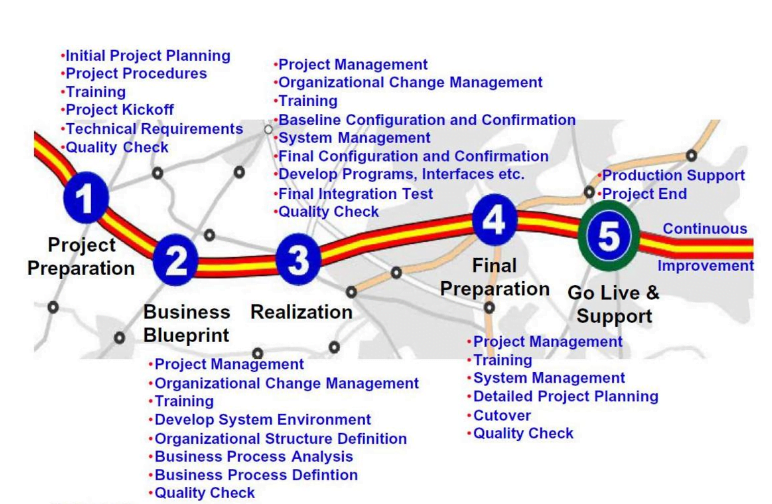SAP Activate Methodology
As you know, as software development processes and requirements have increased, the methodologies to manage these processes have also increased in number. In recent years, especially Agile methodology has changed not only the organizational structure of software teams, but also the organizational structure and even culture of companies. In summary, Agile methodology is a software development model that aims to deliver products in small pieces and encourages continuous change. In another article, I aim to evaluate the Agile model in more detail.
Of course, these developments in the software world have also changed the SAP ecosystem and projects. The ASAP methodology (Accelerated SAP) has been applied in SAP projects for many years. This was actually a classic waterfall model. You can see the steps regarding ASAP in detail in the picture below.

In summary, in the ASAP model, the project plan was made, the conceptual design was completed, then the adaptations and codes were completed, the training and cutover processes were planned and went live.
For many years, this model has been successfully applied in thousands of projects. Due to changing terms and products, SAP now recommends the ACTIVATE model instead of ASAP for S/4 HANA projects. During this transition phase, SAP also suggested the SAP Launch method, albeit for a short time.
The SAP Activate model has 3 basic elements:
• SAP Best Practice Solutions
• Guided Configuration
• Being a Single Model – One Methodology
So what are the phases of the SAP Activate Methodology:
• Prepare
• Explore
• Realize
• Deploy
You can find the details of these steps in the picture below:

We can summarize the benefits of SAP’s Activate model as follows:
• Based on SAP Best Practice solutions
• Since it contains 4 phases, it shortens the project period.
• The Conceptual Design process is replaced by the solution validation process.
• It is based on Agile method.
In summary, the software ecosystem is constantly changing and developing. Software application methods are also developing in parallel with this. SAP also strives to constantly update its products and methods in order not to fall behind in this process. As a part of these ecosystems, we must adapt to change rather than resist it.


